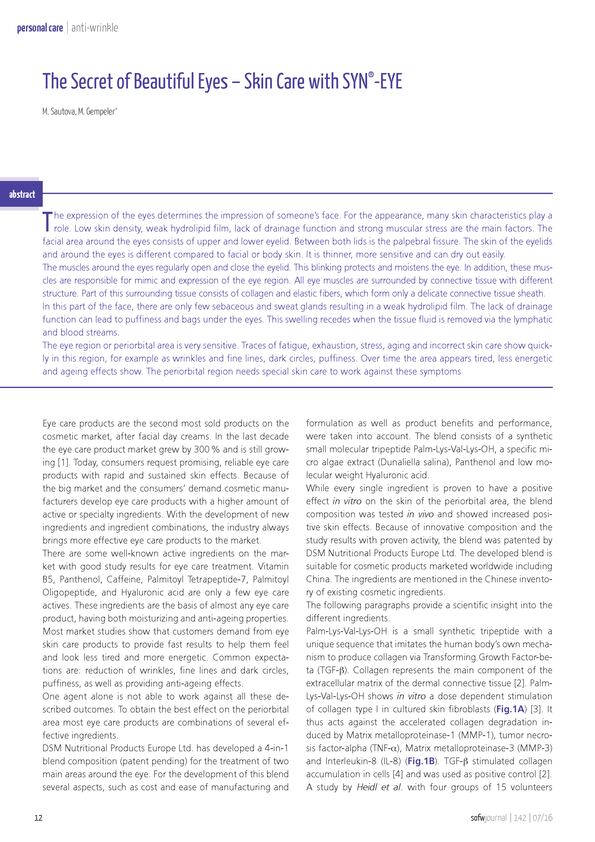In the minds of consumers, beauty is increasingly associated with health. For example, people want to know that their skin care products support and protect the skin to maintain its natural, healthy, youthful appearance. They also want efficient, all-in-one solutions to help cope with huge demands on their time.
Providing skin care products that meet all these needs and reduce the sometimes devastating effects of UV radiation on skin is a considerable challenge for the cosmetics industry. And now a new element has entered the discussion – blue light!
What is blue light?
Blue light, also known as high energy visible light, is the natural part of sunlight that is adjacent to UV light on the spectrum, falling within the wavelength range of approximately 400 to 500 nm.
Additionally, much of the blue light we are exposed to today though comes from electronic devices – smartphones, tablets, computers and TVs. These devices have a peak emission of light at around 470 nm, firmly in the middle of the blue light range (400–500 nm).

Why is blue light discussion on the increase?
Many of us work in front of screens, and then spend much of our leisure time looking at them too – sometimes even using two at once. This is especially true for younger generations. In Britain, 81% of 10 to 15 year olds with a mobile phone also use a second screen while they watch TV. Currently, European users spend around three hours on average looking at artificial light sources, while in the US and Japan this rises to four hours a day.
Does blue light affect skin?
Blue light from screens is already associated with disrupted sleep patterns and adverse effects on the eyes. Consumers are also beginning to make the link between blue light and potential harm to skin. Beauty journalists and bloggers are writing articles on the subject and our own blogger community, among others, has been discussing the issue. However, although debates on the “scary connection between technology and skin aging” indicate awareness of blue light as a modern phenomenon, consumers are not finding answers to their questions about blue light activity in skin.
DSM's scientists have taken a very close look at the effects of blue light on skin. It is known that blue light actually penetrates deeper than either UVB or UVA rays.
Using light sources that excluded UV rays, scientists have shown that blue light has the potential to penetrate and damage all skin layers. At the surface, it is a major source of oxidative stress through the formation of reactive oxygen species (ROS) and reactive nitrogen species (RNS). It weakens the epidermal barrier and leads to hyperpigmentation. The damage it causes to the extracellular matrix can accelerate the aging process.
Total Protection – the holistic approach to skin protection
There is clearly a need to take sun protection further, extending it to encompass not only UVB and UVA but also blue light. However, as a company dedicated to improving sun care for many years, we know true protection can only be achieved with a holistic approach that takes account of perceived drawbacks. If products aren't easy to use, interfere with beauty routines or leave people feeling sticky and with oily fingers they will not use them as often as necessary or in sufficient quantities.
From the skin care perspective, feedback from our own consumer insights surveys, blogger community and reports in other relevant media confirm that time-pressured consumers want to streamline their beauty routines. So, any solution promising protection from blue light must be readily integrated into existing skin care regimes.
With this in mind, scientists in our sun and skin care segments created two ready-to-use formulations that provide extended UV protection into the blue, indoors and out. These formulations contain the UV filter Parsol Max, which extends UV protection in the blue wavelength range, Niacinamide PC for protection against oxidative stress, and an extract from the green, freshwater microalga Scenedesmus rubescence (Pepha-age) for strengthened skin defences. They also contain sensory modifiers which give them a dry skin feel and a slightly silky finish for maximum consumer appeal.
The next step: taking blue light communications forward
Our next question is how to report our findings back to consumers. DSM's scientists have been addressing this, asking: “Do we need a new label or seal for a Blue-light Protection Factor – BPF?” Would this provide greater transparency, or might it just add to the confusion already surrounding UV labelling? There is certainly a debate to be had here, and this will be high on the list of topics for our industry in the near future. As Dr. Jochen Klock, head of global marketing sun care at DSM, says: “Regardless of whether BPF merits a separate claim or not, any market product looking for total protection in the future will absolutely need to encompass the blue light spectrum.
“Whatever the outcome, our customers can be sure that our Total Protection formulations with blue light efficacy don’t just add value to their products. They are backed by full scientific justification and strong claim substantiation based on cutting-edge technology, for complete consumer confidence.”
Aline Hueber – Head of Global Marketing Vitamins
Dr. Mathias Gempeler – Head of Global Marketing Skin Care
Dr. Jochen Klock - Head of Global Marketing Sun Care







